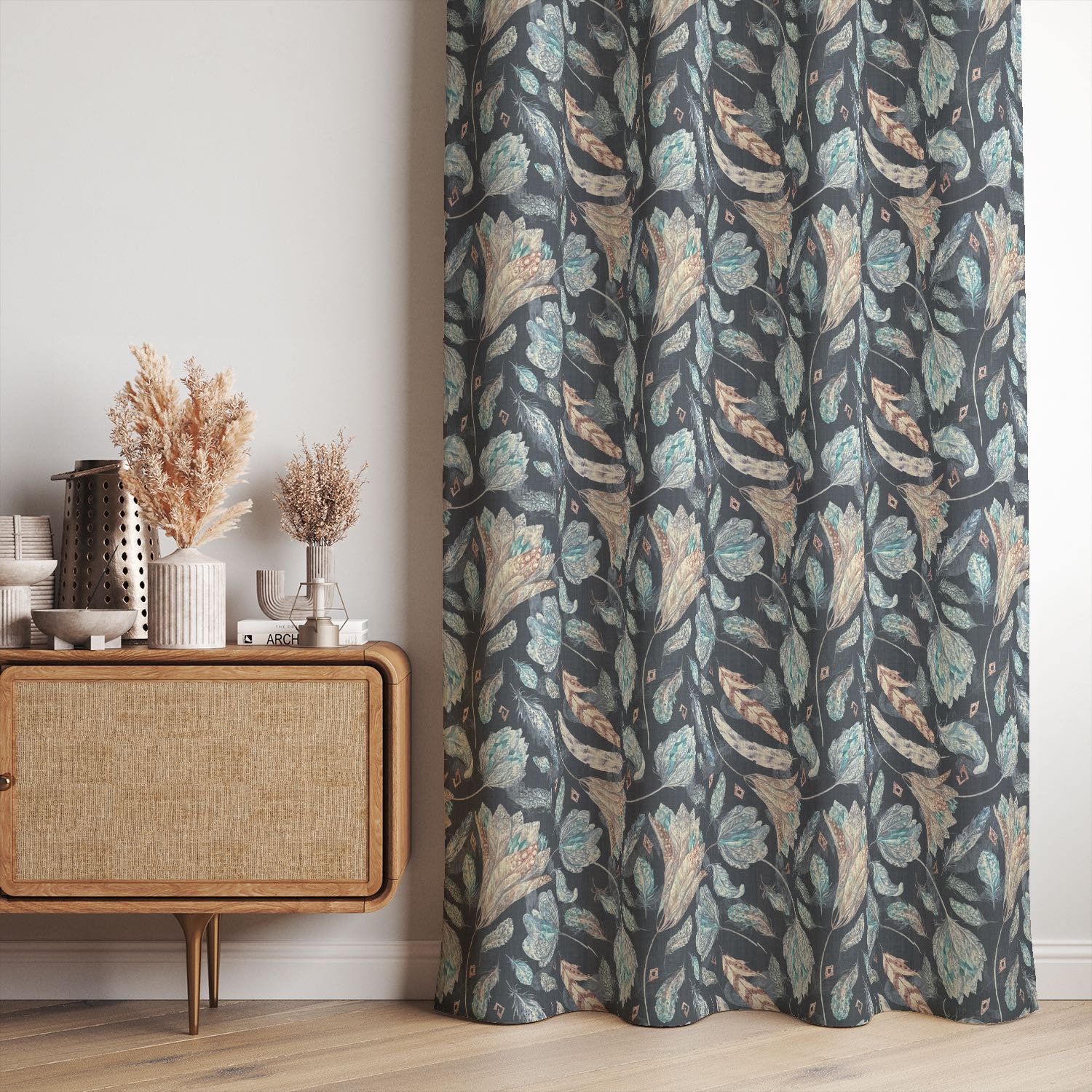A curtain lining is the additional layer of fabric sewn into the back of a pair of curtains. Lining isn't essential but it is an important element to curtain making. So, why even add a lining to your curtains?
The benefits of different types of curtain linings make them a practical step for a range of projects. Curtain linings allow you to achieve a professional finish for most types of curtains, and offer a range of functional benefits:
- UV protection
- Warmth
- Light control
- Enhanced design
There are also even more benefits to be had from curtain interlining fabric placed between your backing lining and front curtain fabric.
So, while making lined curtains may seem like an extra step unless you want draughty windows, echoing halls, or accidentally revealing silhouettes - read on!
A PROFESSIONAL FINISH
Curtain lining provides a tidy finish to your curtains.
Revealed raw edges of the curtain and the wrong side of the fabric can make a project look messy, unfinished, and even create a cheaper feel.
Curtain lining hides the back of the curtain fabric and conceals and offers a second chance to any messy edges on the sides or top of the curtain. The extra weight from the second piece of fabric also allows the fabric to hang better and look fuller.
UV PROTECTION
Sewing in a curtain lining will protect your curtain fabric and room from UV rays.
The sun's ultraviolet rays can make the colours on fabrics fade, especially those in south-facing windows. UV rays can also leak through thin fabrics and slowly damage the furniture behind them.
Having a curtain lining will protect the curtain fabric for longer. We especially advise a curtain lining if you're using silk fabric curtain panels. This is because silk is prone to fading and damage as true silk can't hold any manufactured protections.
WARMING
Curtain lining manages the temperature of a room.
Our windows lose a lot of heat through the winter. And in the summer, thin curtains can let a lot of heat in.
A curtain lining stops draughts coming through the windows, even double glazed and keeps heat within the room. The warming effect of a curtain lining is fabulous for helping to reduce utility bills along with keeping the room warmer. You can also get thermal linings which provides an extra element of insulation.
COOLING
As we just mentioned, curtain fabric and linings can help manage the temperature of a room, including keeping it cooler. They are clever things to have!
In the summer, no curtain, or even worse, thin curtains can let too much heat through.
A pale curtain lining reflects the sun's rays away, keeping your room cool and dark.
LIGHT
Blackout lining ensures that no light will penetrate the curtains.
Thin curtains can let through light which is a pain in children's bedrooms or the summer months when days are long.
Blackout lining blocks all light from your curtains and often has a great sound insulating property too.
Top tip: Plan ahead when adding blackout lining to your curtains as installation, improper care, and accessories can let light through anyway.
When considering how to attach blackout lining to eyelet curtains, you'll need to plan ahead. For the actual curtain pole installation, you'll need to make sure it overlaps the edges of your window. Otherwise, you will still get light through the sides. This is a useful but high maintenance lining, if you're wondering how to wash blackout curtain lining, you'll need to stick to hand washing to maintain its carefully packed fibres.
DESIGN
Curtain linings offer another opportunity to customise the design of your fabric.
We can see the back-side of a curtain from the outside of a window. So, leaving the wrong side of the fabric showing on your curtains can throw off an entire interior.
Curtain linings typically exist in neutral colours, but they are available in other colourways. A contrasting colour can add a new dimension to your room when exposed on a tie back hook.
INTERLINING
Interlining is an additional layer of fabric sewn between the curtain fabric and the curtain lining. Sometimes interlining is called bump. Most interlinings will shrink when dry cleaned but you can buy 100% pre shrunk cotton interlining that will not shrink in dry cleaning, but it does cost a little extra. However, it is perfect to be used against windows that suffer with condensation!
Interlining acts as an extra layer and offers all of the benefits we've just discussed. It delivers a luxurious thickness and can make curtains even more lightproof, temperature proof, and even soundproof when used correctly.
For more advice on choosing curtain linings, visit our blog here. Or if you still aren't sure, let our experts decide with our made to measure service!





